Defensive Fronts: The Wide Front
Generating Pass Rush Pressure From The Wide Front, Across The NFL.
Click here for cutup of wide front snaps
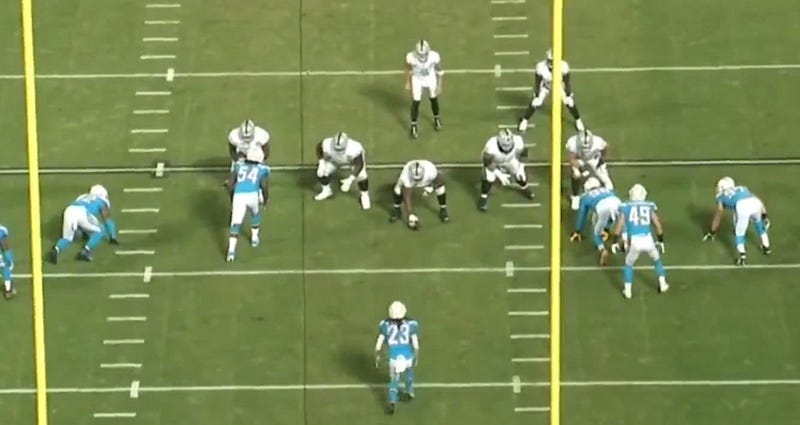
KEY POINTS
- This front is called strictly on anticipated passing downs. Called on 5% of all snaps sampled for this article, but more than 20% of 3rd downs. Nearly all on 3rd&4+.
- The wide front is a 4-down front, with center and both guards uncovered. (Tackles 4i/4/5, Ends 7/9 techniques)
- Advantages of the wide front are in creating four possible 1-on-1s (OTs, OGs), removing much of the impact of the Center sliding to either side, and opening space with wide alignments to be attacked with line games.
HOW THE WIDE FRONT WORKS
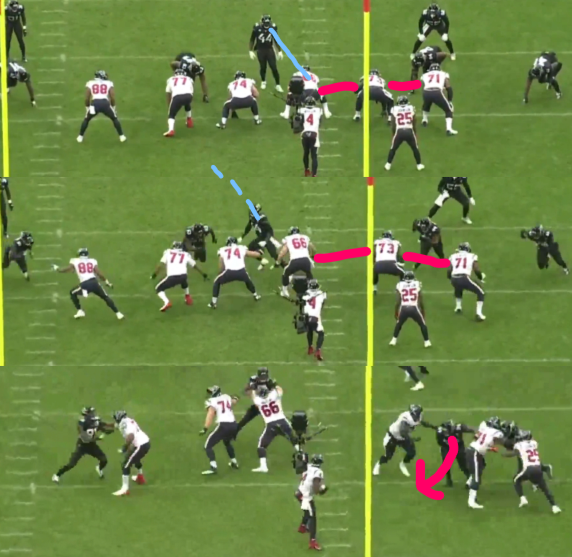
The wide front naturally distances the O-linemen from one another. This reduces the center’s immediate impact in a half-slide. The center sliding to a side also creates a large void on the backside which can be attacked, while isolating the backside guard at the same time. Offensive tackles are isolated as well by this front often. To the left and below illustrate the fundamental problems that this front creates in standard pass rushes.
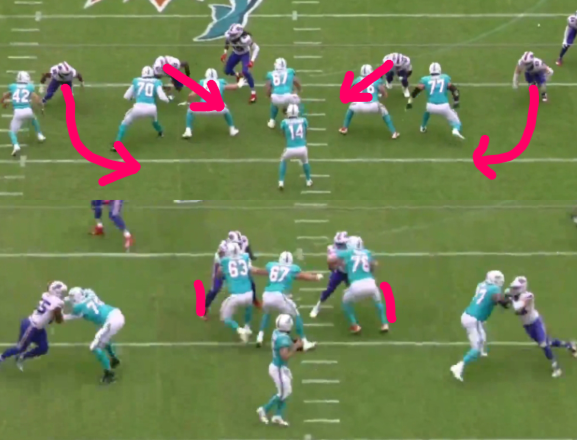
BOX LOOKS
There are a handful of ways to dress this front up, besides base 5/6/7-man boxes. These are meant to confuse or change the protection and create additional stress or space.
- Matched Box (seen at the top of article), where the only backers inside the box are mirroring the HB. The backer may be man-to-man, independent of the rest of the coverage. May also be blitzing the back or rushing if back stays to block.
2. Inserts. These are one, two, or three backers placed somewhere between the D-line, creating simulated pressure and forcing the offense to account for extra rushers.
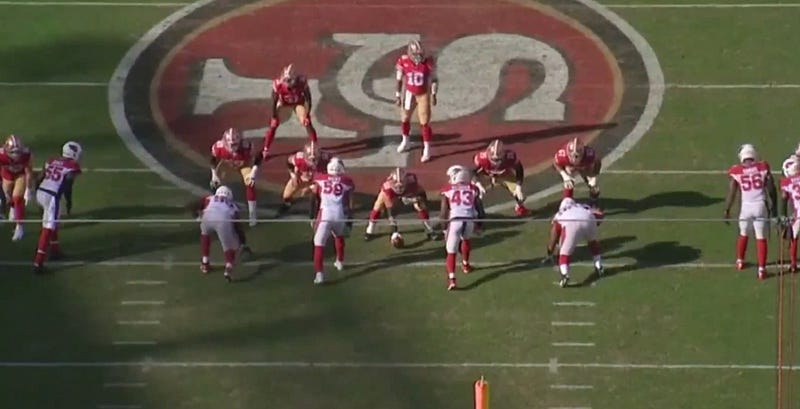
3. Walked. A backer/nickel is walked up on an outside edge of the box. In an empty set, this is a great way to encourage an o-line to half-slide to that side, where the opposite side may have the two best pass-rushers in 1-on-1s in space.

LINE GAMES AND BLITZING IN WIDE
The idea with blitzes and games generally is to create a numbers advantage for the defense at a specific location, either with movement or additional rushers, in order to pressure the passer. In wide, the space between linemen is naturally greater than in standard 4-down fronts. Here we look at a handful of games and blitzes being called, with the advantage of additional space in the wide front.
In every line twist, there is a penetrator and a looper. In images below, penetrator will always be RED, with looper BLUE.
1. EAT. End penetrates, Tackle loops.
A good look for having tackles keep eyes on HB to pick up possible check-screens, and against scrambling QBs.
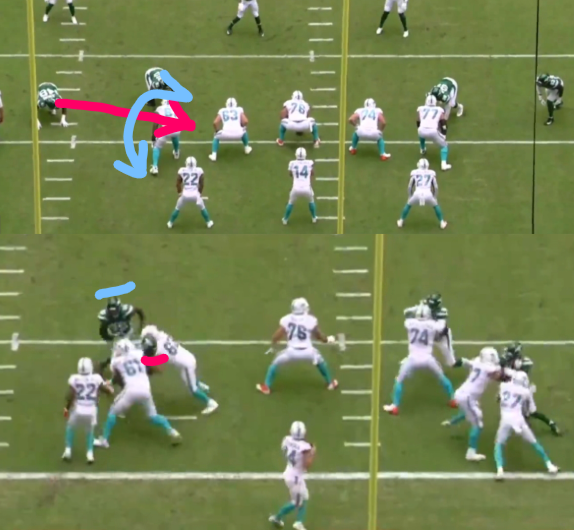
2. TED. Tackle penetrates, End loops.
Attacking the center who may have out-leveraged himself if half-sliding. The looper is attacking either the empty space if the center slides away from the twist, or the far shoulder if slides to the twist.
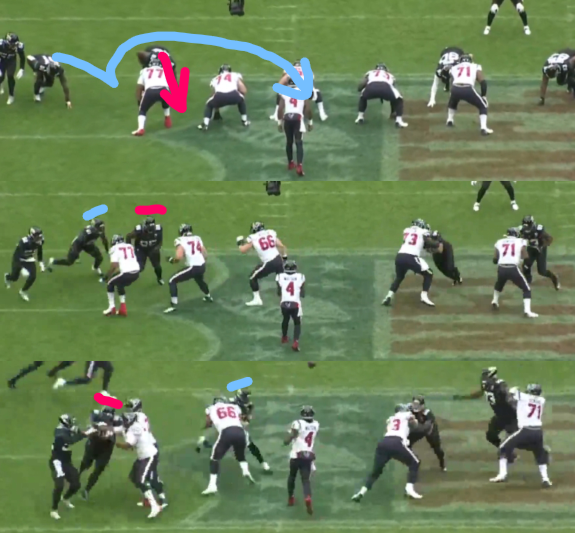
3. TAT. Tackle-Tackle twist.
The penetrator is trying to bring his guard to the center, and create space between OT-OG to his side while looper attacks that space. Depending on the backfield this may give either defensive end a ton of space to work his 1-on-1 with an offensive tackle, while also stressing the middle of the line.
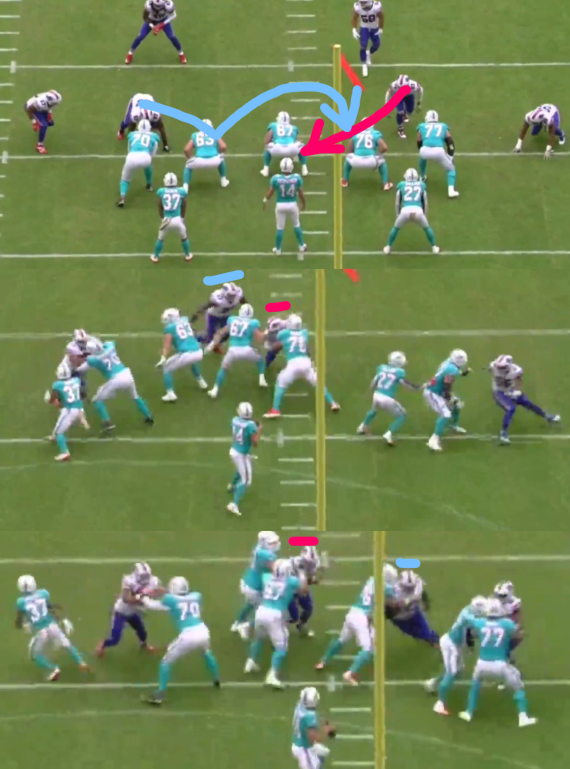
4. B-A (Stunt).
One-man stunt, from B to A gap. DT lines at 4i, aiming at the B gap, and attacks the outside shoulder of OG or inside shoulder of OT for two steps. This forces OG to widen, and OT to stay tight. Meanwhile the DE is getting vertical on the OT. On DT second step, he stabs and crosses face of OG. Depending on backfield and protection, the center may have vacated the space behind OG entirely, or as in the case above, slides to that side. DT splits the space between OG and C (plenty of space due to width of the front) while DE is driving to the back of the pocket on OT, forcing the QB to step up. Great call for taking advantage of a mismatch in terms of athleticism.
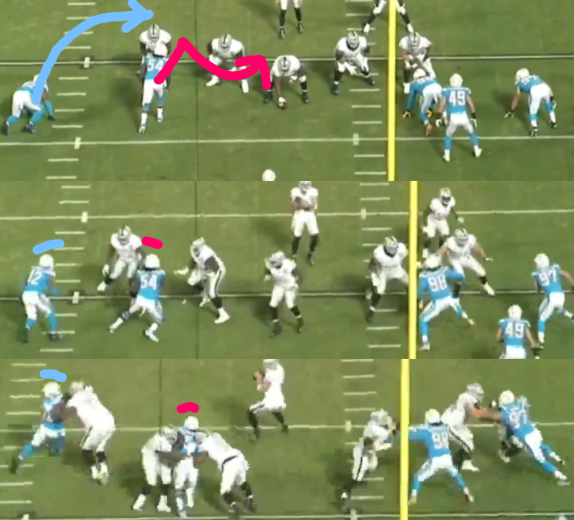
5. WAX (Blitz)
Will-Tackle gap exchange on the blitz. Will is coming down the weak A gap, then bangs out to the strong B gap. The tackle, like in TAT, is bringing the near guard to the center, compressing gaps, and creating space between OT and OG for will to attack.
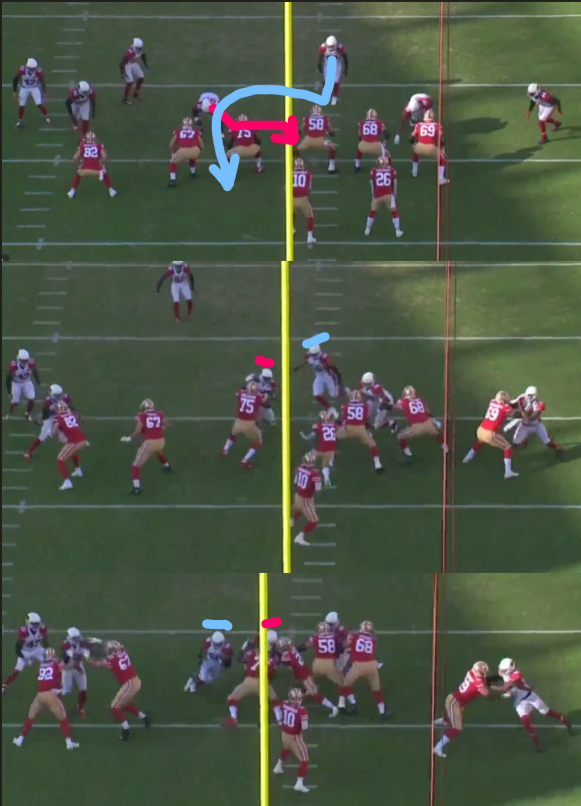
CLOSING
The wide front can be a threatening front on passing downs, and while not the most popular front, it is being called across the NFL at a meaningful rate. A team has the freedom to line up all defensive ends and linebackers in this front, removing traditional d-tackles and using speed to gain a greater advantage in attacking the widened gaps and pressuring the passer.
When called on passing downs, teams with drop-back passing calls rarely see a clean pocket or a protected QB. To avoid sacks, hits, and pressures, teams are resorting to calling quick game concepts, screen calls, or extra chips.
Thanks for reading! Keep an eye out for this front on 3rd downs.
Click here for cutup of wide front snaps.
Article taken from my medium.com. Moving to blogger

No comments:
Post a Comment